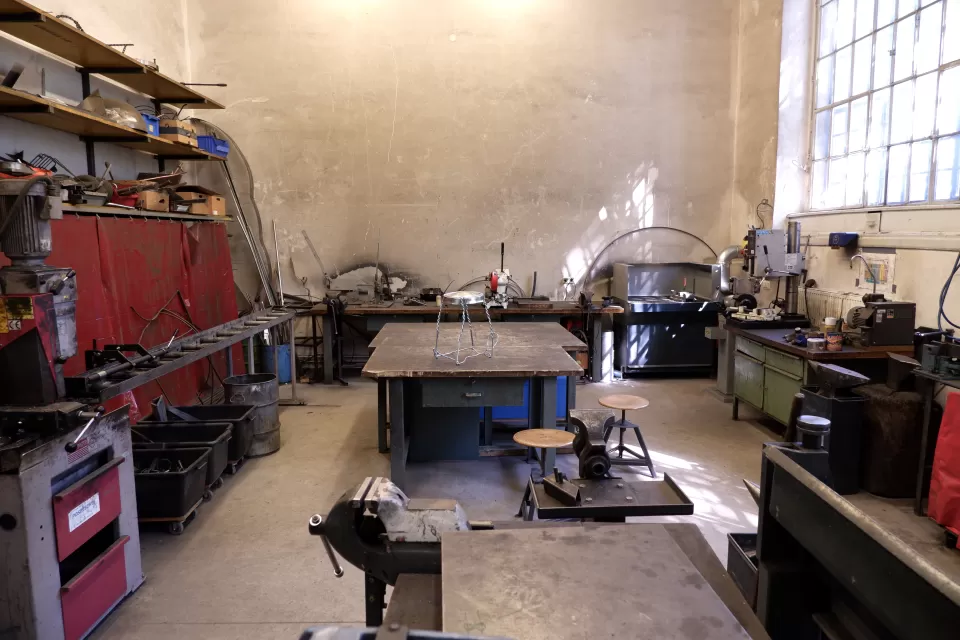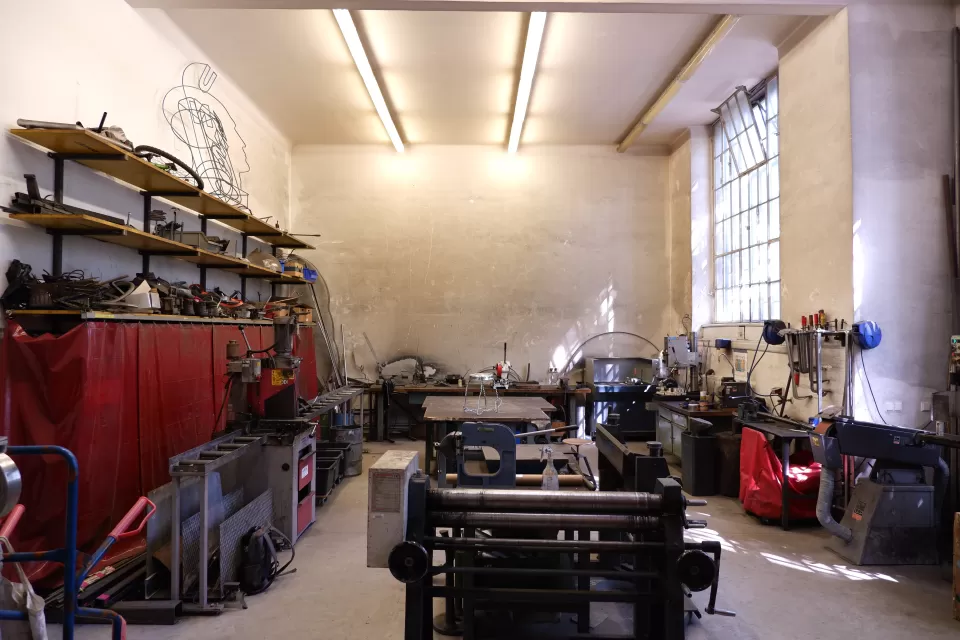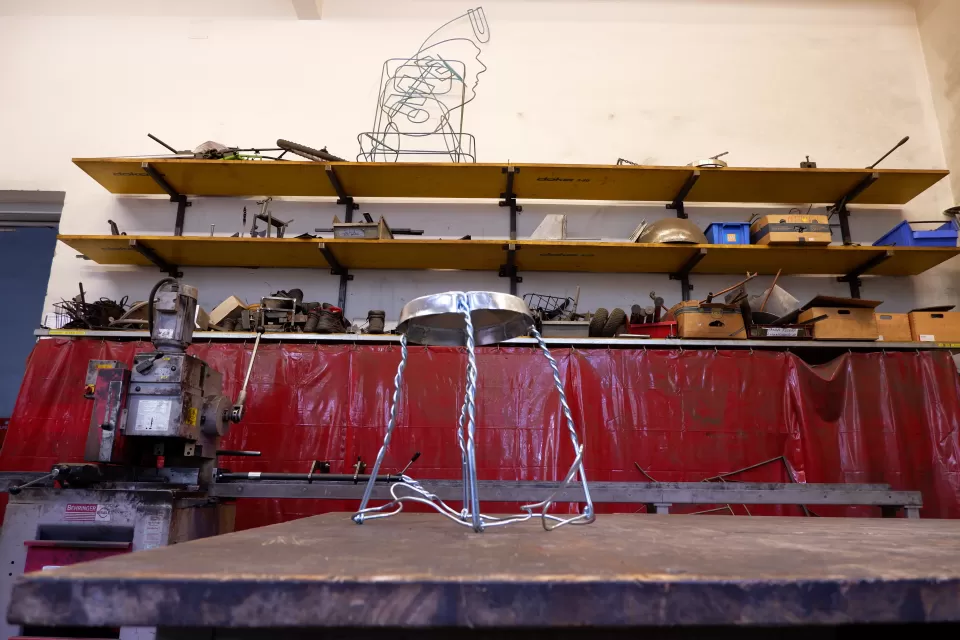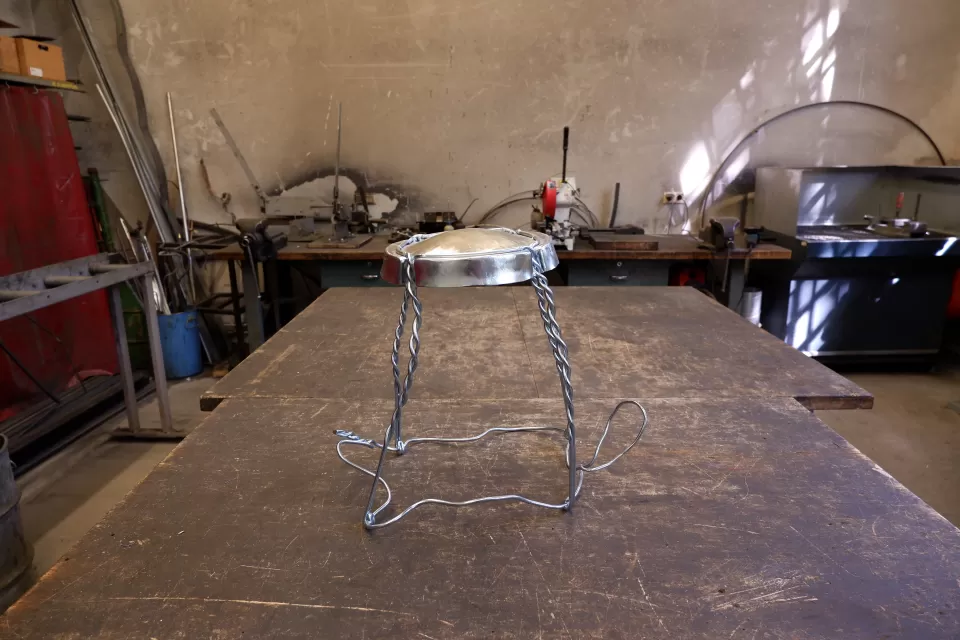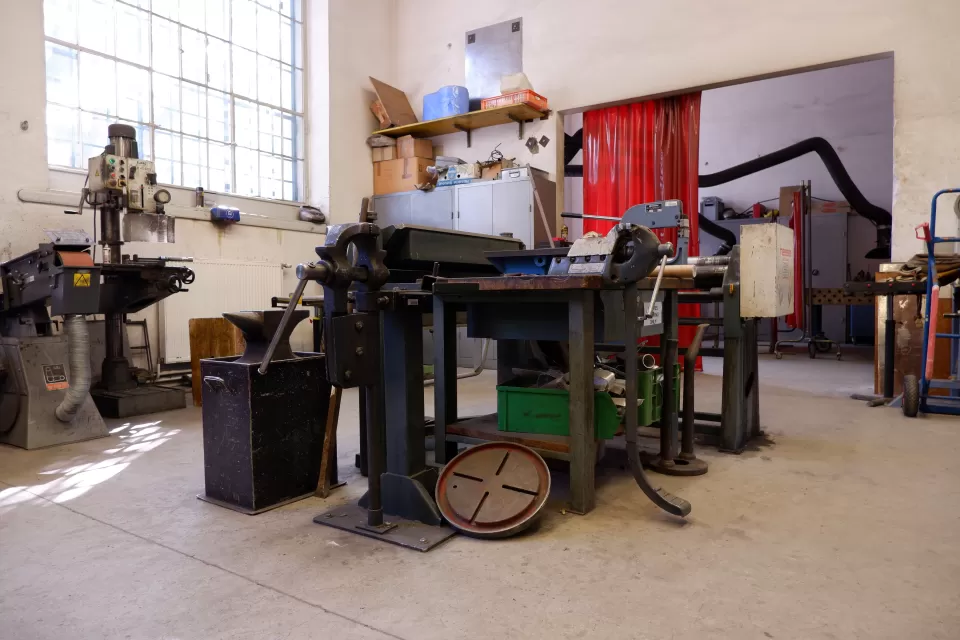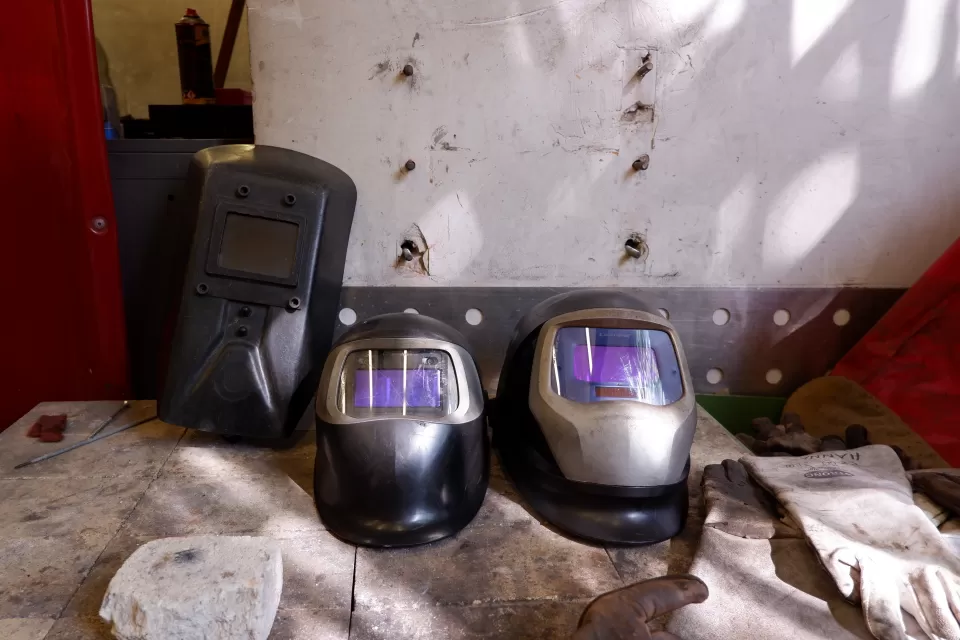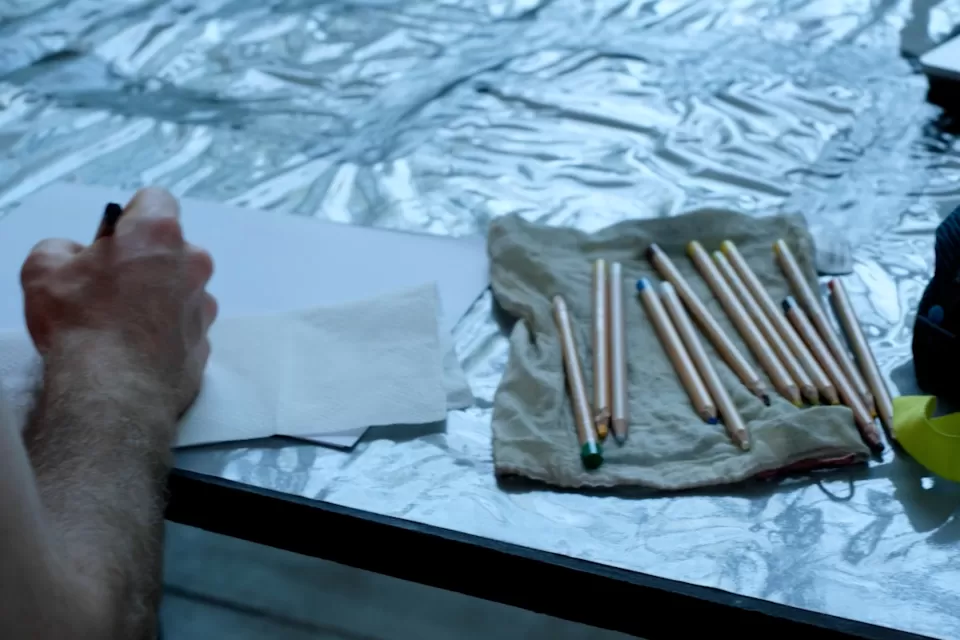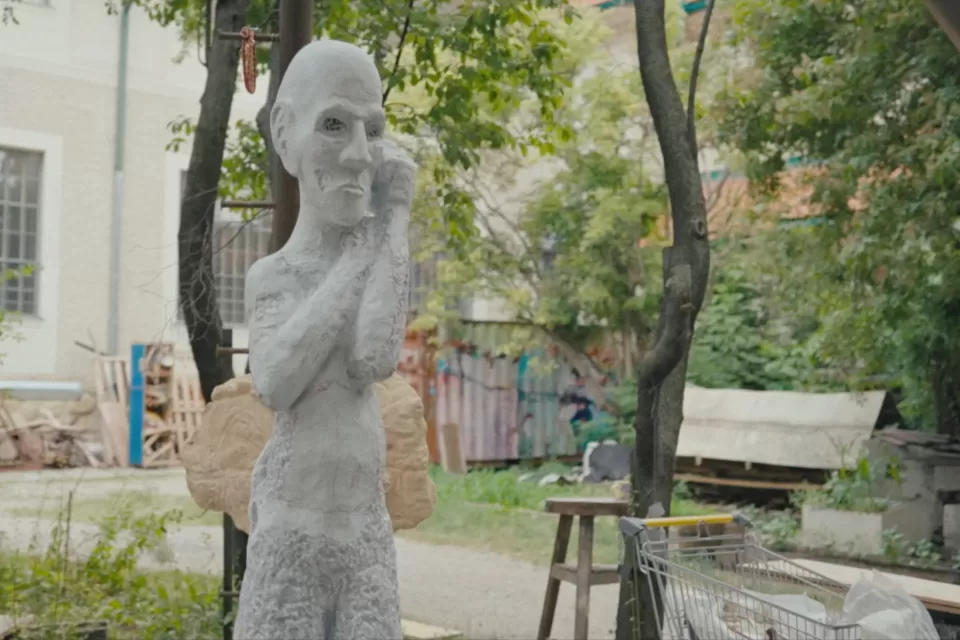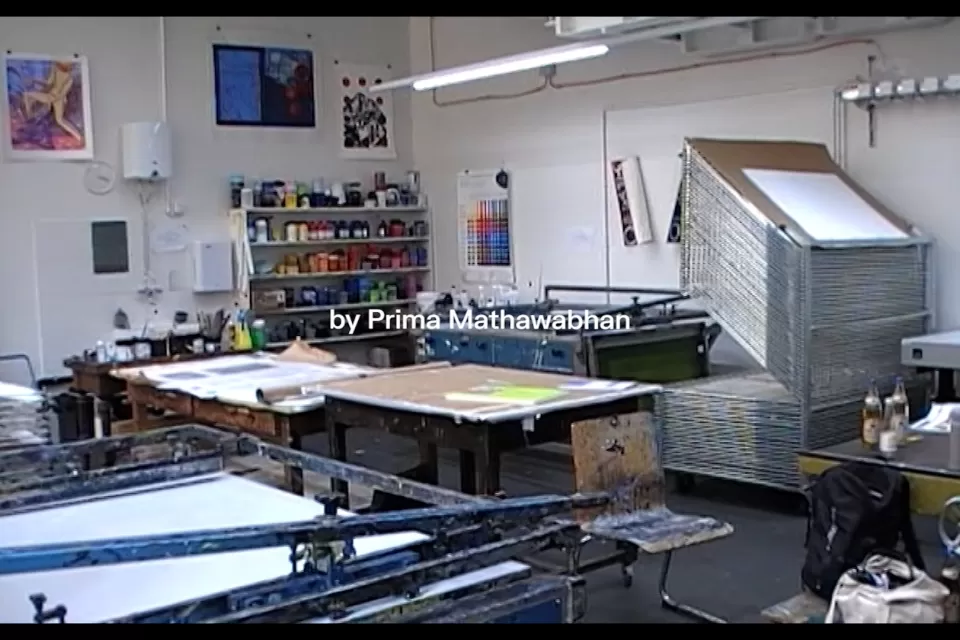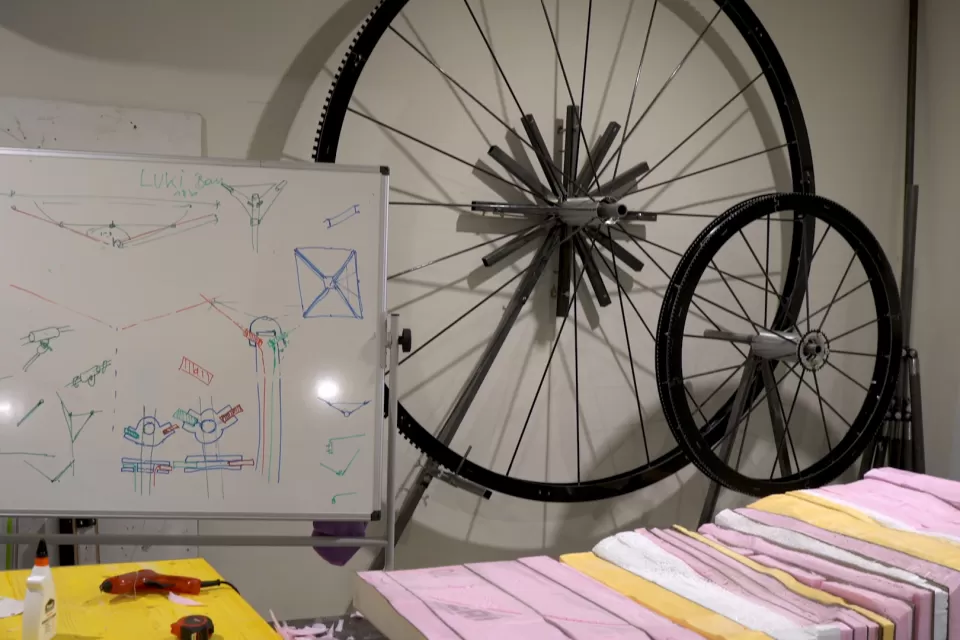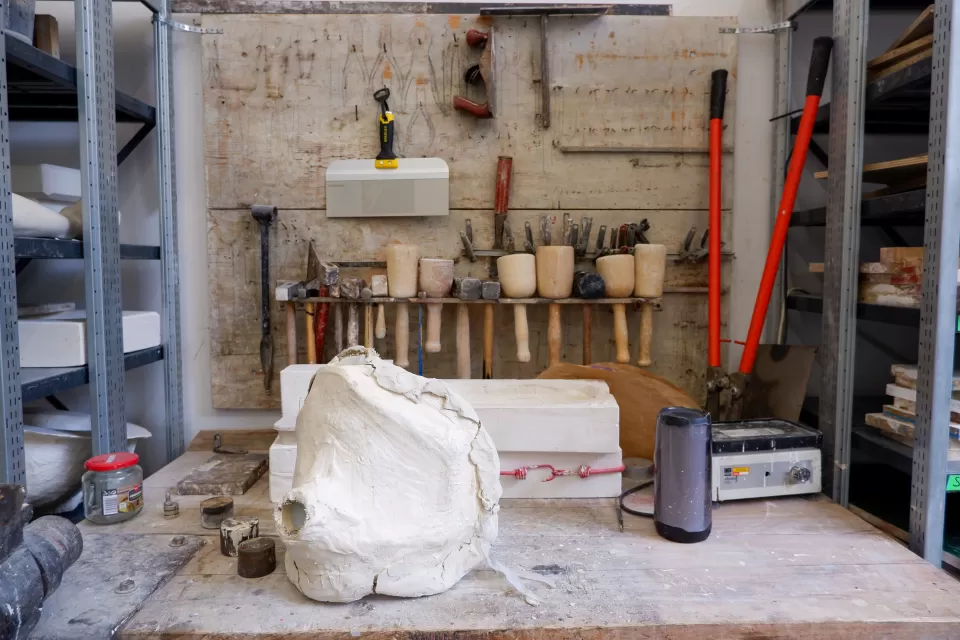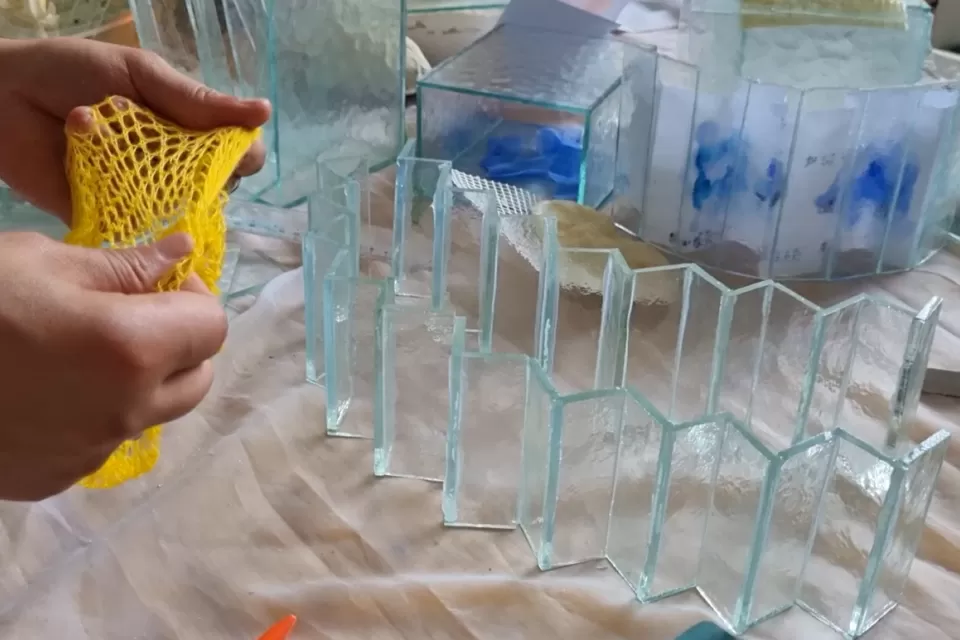
© Natalia Gurova
Podcast with Workshop Manager Matthias Hammer
Author: Natalia Gurova (UGC)
What is a typical day like in the metal workshop in Kurzbauergasse?
How can students realize their artistic projects? How is the metal workshop organized at the Academy?
Natalia Gurova discusses all these questions in a podcast with workshop manager Matthias Hammer in Kurzbauergasse.
Welcome to sound of craft!
My name is Matthias Hammer. I’m a leader of the metal workshop of the sculpture department (note: Art and Space), and I studied here ages ago and also at Angewandte. I became a sculptor, because my neighbour in my hometown in my little village was also a metal sculptor, he did also bronze castings and aluminium castings. And I learned it when I was teenager and for me it was clear that I want to be a sculptor and I want to work with metal. So, I finally got this job here. I do this – I think – really almost 20 years.
When I studied here the two professors were living here, which was kind of bizarre. When I started here one was still kind of living here, Bruno Gironcoli, I think then he retired. And it was very funny, because we had two metal teachers, both professors had their own metal shop, so the shop, where we are here was the metal shop of professor Avramidis. And it was very interesting, because it was their shop, the students were not allowed to enter it.
Here in the shop, you learn the basics of the craft work like hitting with the hammer on something, mostly metal, drilling holes, welding of course, we have different, we have simple welding technique and a more sophisticated one. And soldering also “löten” (note: in German) bending stuff and cutting metal.
We make introduction courses, within one semester, I show every station, every machine, every technique, which is possible in the shop, but this would be up to maybe five metal worker jobs from smith to lathe worker and welder. I just show it, so if students want to do it, they have to practice, with everything you have to practice. And I mean the issue is the safety. The safety is my most important issue, because people can work more or less alone here, so I have to look that they know what could happen here. So, it’s a dangerous place, maybe not as dangerous as the wood shop, but dangerous enough. So, I have many injuries already. I talk about it in the course very placative (note: means striking), I show my scars, that the people get the idea what can happen here. Everybody can work here. I think it’s important to just use the shop. I don’t care, if this really fine arts, you can also repair your bicycle at the beginning, make a shelf or so. You just get into work.
The course is limited to 12 people, which is too many. But not all people who subscribe appear during the semester, so we are then maybe 7-8 and this is kind of which I can handle. And I think in the winter semester we will have 3 of these courses: Roland Kollnitz and Bartholomäus Kinner, both sculptors and know their job very well, and in summer semester Roland is teaching stone, we have two courses Bartholomäus and me.
Right now, the plasma cutter is very popular and a welding machine, the easy one, it’s called MigMag. It’s a very simple: pull the trigger, press the button, I always call it like a trigger, so you make out of two pieces one, very easy.
The metal shop is for the whole academy, at least for the fine arts department. We are so many, and people come from the other classes, the other houses. For example, from the photo class people come a lot for some reason. They do different stuff. Often, they just need for a beamer a certain tripod or pedestal, simple stuff. So, it’s not always the real artwork, it’s more like a part or support of art.
There is one crazy guy, he is still practicing, you could google him, Jojo Vogel is his name, a German guy. He made these shooting machines like guns. He used gold, because I think one of his relatives is a dentist and used tooth gold, little pieces and was shooting it into the wall. He was exhibiting at Martin Janda at Eschenbachgasse. So, this was a funny project and another guy wanted to make a human catapult in the Prater. He wanted to shoot himself through the Prater, but it was only in theory. We made a model out of metal also and I said that the safety is a big issue here. He thought about it and making it in one to one scale. The third one was a monitor. They acted the Apple surface. They made it in the yard. It was like 4 to 5 meters, really big thing covered with cloth then and then they were acting the “Betriebssystem” (note: operating system). It was a really funny work.
Natalia Gurova's work is dedicated to social structures that often remain invisible. Gurova's practice is multidisciplinary, which means that she works with sculpture, printmaking, drawing, and creates site-specific installations and spatial experiments. She curates exhibitions together with artists. Her artistic practice interweaves speculative stories, conceptual ideas and a craft-based approach.
Further articles
One Day at Kurzbauergasse Studios
Author: Janne Schipper (UGC)
Sculpture Studios at Kurzbauergasse
Author: Editorial team
